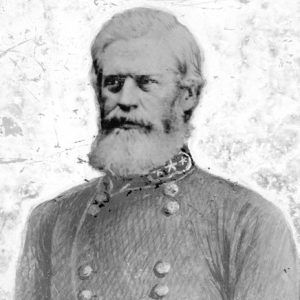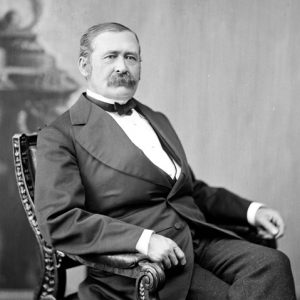calsfoundation@cals.org
Action at Fort Smith
| Location: | Sebastian County |
| Campaign: | None |
| Date: | July 31, 1864 |
| Principal Commanders: | Brigadier General Douglas H. Cooper (CS); Brigadier General John M. Thayer (US) |
| Forces Engaged: | Two brigades from the District of the Indian Territory, Trans-Mississippi Department (CS); units of the District of the Frontier (US) |
| Estimated Casualties: | 2 killed, 4 wounded (CS); 4 killed, 6 wounded, 11 captured (US) |
| Result: | Union victory |
Western Arkansas experienced the last years of the Civil War as a series of raids, ambushes, and small-unit actions. The Action at Fort Smith represented something out of the ordinary: an attack on a fortified town by Confederate forces.
Following the successful Confederate raid that culminated in the Action at Massard Prairie on July 27, 1864, Brigadier General Douglas H. Cooper sought to test Union defenses at Fort Smith (Sebastian County) with a larger force. This probe would also give Cooper an opportunity to escort pro-Confederate families out of Sebastian County. Assembling the brigades of Brigadier General Stand Watie, Brigadier General Richard Gano, and other units, Cooper arrived in the vicinity of Fort Smith at sunrise on July 31, 1864.
Cooper posted a diversionary force in the bottoms of the Poteau River, on the Indian Territory side, to snipe at the post; this force harassed the garrison with rifle fire throughout the day. The main Confederate force advanced up the Texas road on the south side of Fort Smith. At 11:00 a.m., Watie’s brigade, leading the Confederate advance, drove back a picket of the Sixth Kansas Cavalry; the picket alerted the Union garrison of this advance and exchanged fire with Watie’s cavalry as it withdrew.
Union troops soon began to appear on the Texas road to skirmish with the advancing Confederates, causing Cooper to concentrate several of his scattered commands near the Texas road. As Gano deployed his brigade on the flanks, and with Watie’s dismounted Cherokees in support, Captain John T. Humphrey’s artillery section of two light howitzers advanced and opened fire on the Union forces, some 600 to 800 yards distant. This action was sufficient to drive the Union soldiers into their fortifications at Fort No. 2 on the Texas road. For a time, the Confederate howitzers shelled Fort No. 2 and its surrounding trench line.
Thayer, meanwhile, prepared to respond to the Confederates. As the Confederate cannonade continued, a Union counterattack consisting of a small cavalry force, some infantry, and a section of two cannon from the Second Kansas Battery advanced down the Texas road in front of Fort No. 2. The Union cannon had rifled barrels that caused their shells to spin while in flight; this meant the Union cannon outclassed Humphrey’s two howitzers in accuracy and range. Supported by two companies from the First Kansas Infantry (Colored), the Union guns deployed for action and began firing. The Union guns soon commanded the field. When Cooper realized that his two howitzers were outgunned, he ordered them to withdraw. Deprived of this target, the Union guns then turned their attention to the supporting Confederate cavalry, compelling their withdrawal as well.
Because it was nearly dark and he was uncertain of the strength of the counterattacking Union troops, Cooper ordered his men to withdraw with their captured horses and cattle. Gano’s brigade, acting as rear guard, burned some captured Union supplies and the picket’s former station that had been overrun earlier in the action. Thayer did not pursue them, retiring instead into his fortifications. Although snipers continued to fire at the Union post from across the Poteau River the next day, no further action took place as Cooper’s main force returned to Indian Territory.
Many Unionist residents and refugees at Fort Smith were alarmed by the attack and fled across the Arkansas River to the north. Several local civilians who resided out of town suffered the loss of their homes and personal possessions. This was, however, the last sustained Confederate demonstration against Fort Smith; the town and post remained in Union hands for the remainder of the war.
For additional information:
Arey, Frank. “‘The Place is Well Fortified…’: Massard Prairie and the Confederate Attack on Fort Smith.” Journal of the Fort Smith Historical Society 27 (April 2003): 3–9.
Britton, Wiley. The Civil War on the Border. Vol. 2. Ottawa: Kansas Heritage Press, 1994.
Edwards, Whit. “The Prairie was on Fire”: Eyewitness Accounts of the Civil War in the Indian Territory. Oklahoma City: Oklahoma Historical Society, 2001.
Frank Arey
Morrilton, Arkansas
 Douglas Cooper
Douglas Cooper  Richard Gano
Richard Gano  John Thayer
John Thayer 



Comments
No comments on this entry yet.